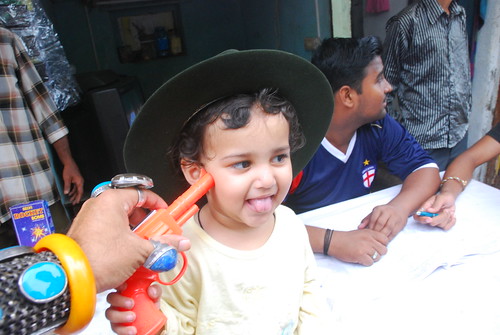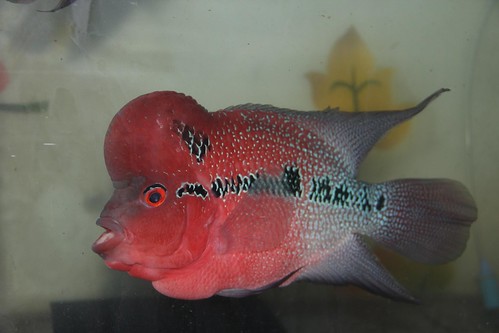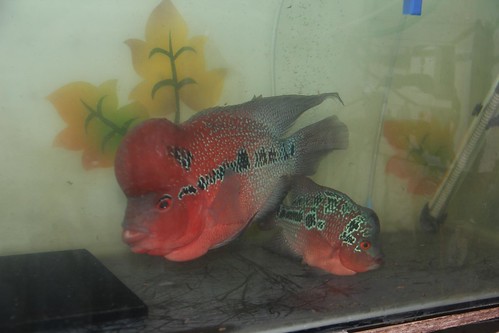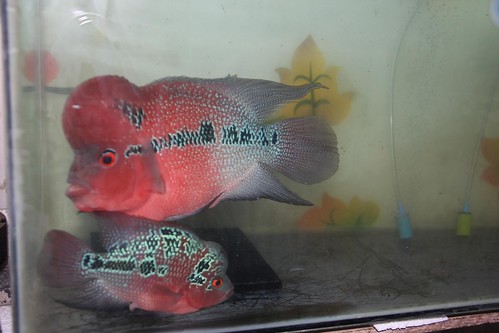She was merely two days old when I lay eyes on her at Holy Family Hospital Bandra , the first day we could not see her ,and I began shooting her pictures , taking in her beauty her gift of life .When she came home from the hospital I could not stop shooting her , and she gazed at the camera ,soon she began touching the camera as she grew , from toddler , to her first step.
I took her around Bandra , carrying her on my waist I shot political rallies , Sufi processions , and I could not take her far but I did take her to Mahim stealthily , to meet my beggar friend Appu, he has no legs no hands , and she saw life ,, the stump of life ,,,
I gave the camera in her hands , when she was 18 month old , made her shoot the Ganpati Pandals , made her shoot Durga , and took her to the various Durgtsavs , for almost two years , making her stand on a chair and shoot Hope and Hindutva ,, message of peace Hope Humanity as I saw it with my eyes .
I took her to the Parsi Fire Temple Tata Agiary Bandra and late Mr Vazifdar the High Priest ..was very kind to her .. she still asks for him..
I took her to St Peters Church made her shoot the interiors , St Andrew Church , Mount Mary , and than when photographers friends Glenn Losack Marc De Clercq , Kim Viola , Jean Marc Gargantiel and s many others came home she had a brush with fame shooting them.
I made her shoot Moharam, Shia kids scourging on the streets of Bandra ,and as she began using the camera independently she shot Mr Rajesh Khanna , and was his favorite child , she met Salman Khan at his house and her tryst with photography continued , shooting beggars , the demarginalized , the beggars loved her ..
She shot St Stanislaus Republic day functions , was friendly with dogs cats goats of our area , and Marziyas storyboard is a set on Flickr .. and Blogspot.
,,I made her net savvy Twitter Facebook.. that I used for her on proxy.
But once her sister Nerjis Asif Shakir was born she stepped aside and let me train Nerjis with the camera ..Marziya is now 6 and a half year old , more studious , more private , and she can shoot pictures ,, I put her on to Auarium fishes , but than Nerjis usurped her tanks and all the 11 Flowerhorns ,, at home , including the Java finches .
I mostly take Nerjis out on the streets as Nerjis is fast , and cordial pays the beggars she shoots and even the kids in the slums.
The Bandra Reclamation homeless lady is dead but both gave their pocket money to her , and I dont shoot Marziya .. but these were casual shots I took.. now Marziya recites Nohas , knows to cook chapattis and takes care of Zinnia and Nerjis ..
Both Nerjis and Marziya love water colors and Doremon..
Every year they wait for Marc De Cler or Glenn and the greatness of these photographers has rubbed off on them as humility .. of being able to see what others cant see .. the unknown zone of mystical zone of bringing to life ,,, what was unexposed .. on the human consciousness .
Mr Shreekanth Malushte one of my Gurus has been the guiding force on both my talented grand daughters .. but I must hastily add though I have not instilled photography manically on my third grand daughter Zinnia Fatima she can shoot pictures to...
My grandkids are all Canon Users ,,.Marziya uses the EOS 7D with a vertical grip , Nerjis uses the lighter Canon EOS 60D ..
I thought this picture needed me to tell you a story hopefully I did ,,, to the grandparents in waiting out there ..
Tuesday, March 18, 2014
Marziya Shakir My First Grand Child
Monday, March 17, 2014
Tuesday, March 11, 2014
Russian Roulette
100,225 items / 607,208 views
1. A stunt in which one spins the cylinder of a revolver loaded with only one bullet, aims the muzzle at one's head, and pulls the trigger.
2. An act of reckless bravado.
Russian Roulette
pictures
within
pictures
stories
from my head
words
encrypted
decoded
in the spiders net
google searching
for Marziya
on the internet
at Flickr
a story board a set
a two day old baby
her journey
you wont forget
changing
the course of my life
forever in her debt
no tear of regret
Thursday, March 6, 2014
Tuesday, March 4, 2014
Monday, March 3, 2014
Marziyas Red Dragon Flowerhorn Breeding Pair
Flowerhorn Breeding Tips to Improve Performance
There are countless flowerhorn breeding tips and techniques, but only a few of them really matters. In this article, let us limit our discussion to the top five flowerhorn breeding tips. They are the following:
1. Use High Quality Parent Flowerhorns
If you want high quality results, it is logical that you should use the best materials you can find. Do not fall into the trap of breeding low quality flowerhorns expecting that high quality fry will come out of it.
If you want to breed for fun, you may use average quality breeders. However, if you are really serious in producing high quality flowerhorns, invest in high quality breeders.
2. Properly Prepare Your Flowerhorn Breeders
This flowerhorn breeding tip significantly improves hatching rate. Be sure to allow at least 15 days before you introduce your breeders to each other. During that time, feed them frequently in small portions.
After the breeding program, allow your flowerhorns some time off before you breed them again. More details flowerhorn breeding preparation.
3. Use the Appropriate Tank Size for Breeding
Flowerhorns become more aggressive when mating. To reduce the risk of injury, provide them enough room. I recommend using a 50-gallon tank as a minimum requirement. If you have a 4-feet tank (around 70 gallons in capacity), use it. More tips of tank sizes.
4. Properly Cull Your Fry
Most inexperienced flowerhorn breeders are puzzled how successful ones manage to produce only high quality output. The secret may just be that they do not show you the undesirable ones.
For an average fry population of 1,000, I would say that only around 50 (5%) of those are good quality. When the fry community is two months old, I normally would have culled half of them already. Before they reach 3 months old, you could no longer see any low quality flowerhorn in my tanks.
5. Never Give Up
It is seldom that a newbie breeder succeeds on his first try. If you think you have done everything to ensure success, it would not be long before you are rewarded. It could be just that your breeders were not yet ready. Just keep on going.
Flowerhorn breeding is not an innate talent nor is it mystical; it is a skill developed through persistence. Incidentally, it is also a very fulfilling activity for hardcore hobbyists. Good luck!
www.myflowerhorn.com/2012/02/5-best-flowerhorn-breeding-t...
Marziyas Super Red Dragon Flowerhorns Breeding Pair
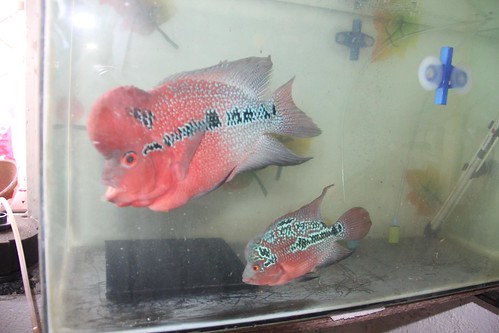
Marziyas Super Red Dragon Flowerhorns Breeding Pair, a photo by firoze shakir photographerno1 on Flickr.
How to Breed Over Aggressive Flowerhorn Fish
In this article, you will find proven breeding tips for an overaggressive flowerhorn fish.
Flowerhorn cichlids are especially aggressive when they breed. However, there are steps you can do to reduce or manage that aggression.
1. Properly prepare your flowerhorn breeding couple.
2. Let the breeders live together in a single tank divided by a clear glass or acrylic for a long time; up to 2 month or more if needed. This allows both to become familiar with each other.
3. Feed both breeders to satiation when removing the divider to check if they can already live together without it. Hungry breeders are naturally more aggressive. Place the divider back when they start fighting.
4. Lip locking is not kissing. It is fighting. Separate them.
5. More often, the female is the aggressor especially when the male is not that big. Rule of the thumb is that an aggressive female cichlid should not exceed half the size of the male.
6. Breeding flowerhorn fishes that are both overaggressive is twice as hard. Choosing a more docile breeding partner for an aggressive breeder may just solve your problem instantly.
7. Keep breeding tank away from people. You may also cover the sides of tank with old newspaper to keep the breeders from being distracted when people pass.
8. Turn aquarium light a bit dimmer. It may help them calm down.
Flowerhorn Breeding Tips - the No Contact Technique
Yes, you can naturally breed louhans even without letting them touch each other. Here are the steps:
1. Raise the clear glass divider a bit higher, around 1.5 inches from tank bottom, so that you are able to slip through the space below a tile large enough for the breeders to share. A 12”x12” floor tile placed upside down should suffice.
2. Attach air stones on each side of the glass divider so that there is running water near the tile. This makes the tile the ideal spot for laying the eggs. When you notice the female cleaning her part of the tile, you have done this step successfully. The male should also be cleaning his part.
3. When you think the female is already ready for to lay her eggs, keep an eye on them.
4. When the female starts laying her eggs, let her deposit the eggs on top of the tile for about 15 minutes.
5. After she has already laid some of her eggs, slowly turn the tile so that the male could start spraying his milt into them. To turn the tile around safely, keep the male breeder restricted in a corner using a fish net while performing this step. Use your other hand to turn the tile slowly. The female may attack the glass divider, but your hand will be safe.
6. Continue doing this until the female has stopped laying her eggs.
7. Remove the tile and artificially hatch the flowerhorn eggs. You may also choose to let the female breeder care for the eggs until they hatch.
Breeding louhans can be risky and may cost you your breeders when not done correctly. Read more flowerhorn breeding tips and guides for additional information on how to keep your fishes safe
www.myflowerhorn.com/2012/02/flowerhorn-breeding-tips-for...
Marziyas Super Red Dragon Flower Horns Breeding Pair

Marziyas Super Red Dragon Flower Horns Breeding Pair, a photo by firoze shakir photographerno1 on Flickr.
Breeding Tips
The Flowerhorn is a very hardy fish and is relative easy to rear. However, there are also certain techniques and measures to take if you want the best quality out of your fish. No fish can survive in captivation without some control over the environment on the owner's part.
Basic Environmental Control
Water Temperature
The Flowerhorn fish is able to thrive best in water of tropical temperatures, ranging from 24 to 30 degrees Celsius. The optimum temperature would be between 26 and 28 degrees Celsius. It is advised that you maintain the optimum water temperature when keeping a baby or premature fry.
pH Levels
Flowerhorn fish can survive in water with a neutral pH value of 6-8. Similarly, it is advised that the pH is maintained at 6.5-7.2 when keeping premature fish. Changing the water of the tank regularly once a week is a good way to maintain pH stabitlity. If you are unwilling to change the water so often, you can also mix some crushed coral with the gravel. This will help to prevent any drastic fluctuations in pH levels, which will be detrimental to the fish. If you have the right apparatus, it would also help to check the pH of the water regularly.
Change of Water
Overly clear or clean water is also not necessarily the best for the fish, as it is of course difficult to maintain, and more importantly clear water from the tab is treated with chlorine and other minerals which are not too good for the fish. It is therefore advised that when changing the water, it is better not to change all the water, but leave a little bit of "dirty" water in the tank. Changing all the water at once will also cause too drastic a change in the fish's environment, giving stress to the fish to adapt to a new environment all over again. It would also be difficult as changing all the water in the tank would involve getting the Flowerhorn out of water, and being the aggressive and active fish that it is, it would be difficult to simply hold it on a small net for a while. It would probably jump out, or even attack the owner.
Cleaning and Filtration Systems
It is essential to have an efficient filtration system when keeping any fish in a fish tank, or the fish's waste or the fish food will contaminate the water, causing it to be very murky and dirty. The filter should be cleaned regularly. Some people keep sucker fish in the tank together with the other fish because the sucker fish is known to be able to feed on the fish's waste and algae, serving as a good cleaning agent. This is not applicable however when keeping a territorial and aggressive Flowerhorn Fish, as the sucker would probably end up being killed, or even eaten as it is a relatively small fish. It is therefore inevitable that you have to spend time brushing and cleaning the tank frequently if you wish to keep a Flowerhorn. Filtration systems are in no way functional as a substitute for water changing, as too much waste will eventually clog up the filters, and not all waste particles can actually be filtered. They are also unable to filter up the waste and algae that sticks to the sides of the tank, so it is very important that the water is changed and the sides of the tank are cleaned and brushed regularly.
Oxygen Pumps and Water Flow
Oxygen pumps are also essential to the well-being of any fish kept in a tank, as this will replenish the dissolved oxygen in the water. The pumping of air into the water will also cause mild currents and keep the water flowing, preventing uneven distribution of water temperature oxygen concentration. Water must also be flowing in order for the filtration systems to work.
Salt and its Benefits
Salt is good as a stabilizer of sorts. It helps maintain water conditions and keep the fish healthy by acting as a disinfectant and killing some parasites in the water. Also, although the Flowerhorn is a freshwater fish, even freshwater ponds and rivers have a certain concentration of salt, thus adding a little bit of salt in the water also helps to make the fish feel "at home". A "little bit" would mean one or two teaspoons, too much salt will also kill the fish!
Background Pictures or Fake Plants in the Water
This will also help to make the Flowerhorn feel that the environment in the tank is more similar to its natural habitat. Contrary to belief, fake rather than real plants are better for the fish because real plants are hard to maintain without extreme care, and should the plants end up dying, they will contaminate the water. Some people think that plants will actually help to convert carbon dioxide in the water to oxygen. Although the plants may seem helpful in this sense, you need a lot of plants to produce enough oxygen to replace an air pump, and as mentioned above, air pumps are more useful in creating mild water currents. Fake plants and background pictures will also help to decorate the tank and complement the appearance of the fish.
Feeding
How often the fish should be fed
The Flowerhorn fish has a voracious appetite. There are no so called "optimum" times when it should be fed, but it is advisable to feed the fish in small amounts spread over a period of time every day.
Live Feed
The Flowerhorn is more carnivorous in nature and prefers meat or live feed. This includes small fish and shrimps. Blood worms and mealworms are exceptionally popular feed sold in Singaporean aquarium shops. Some of these insects are even enhanced with chemicals like colour enhancers to increase their size and nutritional value. Some of them are said to be able to brighten the colours of the fish, increase the size of its nuchal hump etc. It can feed on either fish feed or live feed.
Processed Fish Food
Processed pellet feed that is high in protein is recommended to be used together with other live feed, as they also contain colour enhances and other chemicals that are meant to be perfect for tank fish. It is not advisable to replace live feed with such foods however, as overdose of the different chemicals in the food will be harmful to the fish. A balance between natural live feed and fish food should be maintained.
Other Tips and Techniques
Keeping Multiple Fish
The Flowerhorn fish is aggressive and territorial in nature, and it is not advisable to keep another fish with it. If you wish to keep two fish in the same tank however, it is a must to partition the tank to prevent the fish from fighting or killing each other. This technique is useful should you intend to breed some baby Flowerhorn. Keeping a male and female Flowerhorn in the same tank separated only by a transparent plastic partition will allow the two fish to be more accustomed with each other, before removing the partition for more intimate contact.
Mirrors
Flowerhorns show their best colours when agitated. When the Flowerhorn sees its reflection in a mirror, it will also be agitated and look its best. Putting mirrors and colourful images in the tank is actually a technique used by competition breeders so that they get the best quality from their fish and increase their chances of winning a competition.
library.thinkquest.org/04oct/01027/breeding.html








